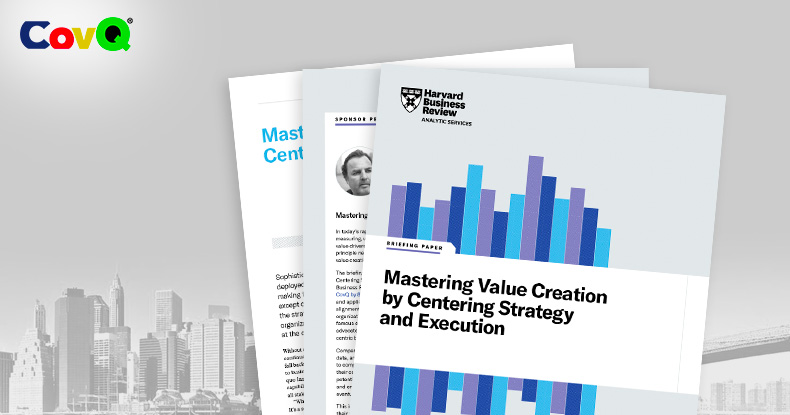Enlarging the Meaning of the Climate Change Cost
Debates and discussions about climate change are present everywhere. There are many different, even divergent opinions about this fundamental issue, but none of them has such a wide range of diverse views like the meaning of the cost of the climate change.
During the last years, more and more people from different parts of the world had to face surprising ways in which the nature is manifesting itself. These are realities of our generation: extreme heat waves, strong rainfalls, immense flooding, north and south glaciers melting, rising sea level, extended deserted areas, compromised crops.
This all represents a challenge to the governments, international organizations, private companies and last but not least, for the people. It is the role of the leaders to offer solutions, which are very difficult to be identified and designed. Until their implementation, there are long negotiations which are extremely difficult, especially because everybody is thinking when discussing about climate in cost-related terms but many have different understanding of what should be included in the cost of the climate change.
Existing frameworks for climate change actions and cost estimation
In many countries, policies regarding the climate change and its impact on the lives of people, governments and businesses are already developed. This kind of documents also includes some basic monetary vectors that we can assimilate as costs related to the climate change.
In the US, President Biden’s Executive Order on Climate-Related Financial Risk (The Importance of Measuring the Fiscal and Economic Costs of Climate Change, The White House, 2023 & Executive Order on Climate-Related Financial Risk, The White House, 2021), has amongst its provisions some very important paragraphs related to the decision of creating a government wide strategy regarding the measurement, assessment, mitigation, and disclosure of climate-related financial risk to Federal Government programs, assets, and liabilities, in order to increase the long-term stability of Federal operations, the financing needs associated with achieving net-zero greenhouse gas emissions and adapting to the acute and chronic impacts of climate change. In the US, we also have the Inflation Reduction Act, of which a very important part is dedicated to climate change actions to be taken in the US. Their total cost is estimated at hundreds of billions of USD.
Other countries, international institutions and academia proposed as well different types of documents which relate to the climate change policies and its related costs. Following such strategies, there are already calculated costs related to climate change and we can again count them in hundreds of billions of USD, and we will discuss in trillions of USD in the future; such costs include the direct climate change costs, the growing expenditures of the governments, costs due to fiscal effects and tax incentives, additional investments in climate-friendly new technologies, lost revenues due to the evolution of the environment, insurance costs, supplementary financial costs due to climate change risk, development of new environmental-friendly technologies, etc.
On the international level, it is very largely known the positive implication that the United Nations is leading in implementing a result-effective framework in dealing with the climate change, and we can provide as an example the Paris Agreement, the SDGs and the COP-conferences.
At the European Union level, we have the European Greed Deal, the EU’s plan to become climate-neutral by 2050, then we have the EU Emissions Trading System, and within the member states a lot of national policies in order to boost the climate change response actions.
In China, we have the “30-60 Goals”, the ambitious commitments to peak their carbon emissions before 2030 and to achieve carbon neutrality before 2060. Taking into consideration that Asia is the continent with the highest level of carbon emissions, I would emphasize the very ambitious policies that have been adopted in Japan, Taiwan, Singapore and South Korea and the struggle of India to balance its presence in the global carbon emissions reduction trend.
The Noble prize laureate in economics William Nordhaus, probably the most prominent academia representative of climate change economics developed a model known as DICE – Dynamic Integrated Model of Climate and the Economy. One of the major objectives of this model is to estimate the social cost of carbon which represents the present value of the net future harms from an additional ton of emissions in a particular year. Nordhaus prefers a high discount rate and he emphasizes that we shouldn’t reduce emissions too quickly, because the economic cost to people today will be higher than the benefit of protecting people in the future. Regarding Nordhaus, I agree with the final conclusion of his Noble Prize Lecture: knowledge, proper pricing, coordinated action, and new technologies – these are the steps that are necessary if we are to tame this Colossus – the climate change – that threatens our world (William Nordhaus, Noble Prize Lecture, 2018). Let me emphasize the word knowledge (very connected to education).
Unfortunately, such documents, agreements and models do not capture all the possible costs that the climate change could generate. Such an example is the cost related to climate-migration and its effects. Why do I emphasize this particular cost? Because it is a huge one. Calculated not only in monetary terms but also in human suffering and impact. Another example is the additional cost of educating the younger generation about what the climate change means, about what it is its huge cost (in financial and also non-financial terms) and by facilitating the access of as many young people as possible, to minimum standards of education.
Migration and Education
When relating to the climate change issues, the costs are not the only factor that should influence major decisions. The costs of climate change are often estimated in monetary terms, but this raises ethical issues (Quantifying the human cost of global warming, Nature Magazine, 2023). And it is so, indeed.
Most of the metrics used to estimate the impact of climate change in terms of cost do not take into consideration one vector which can amplify these costs, and could even generate social turbulences across the globe. And this is the climate-migration. Some international documents offer a general framework in dealing with the climate-migration but, nowadays, in such documents it is still not clarified the status of those people who are in the category of climate-migrants, especially when establishing if they are or they are not assimilated as refugees (Climate Change is Fueling Migration. Do Climate Migrants Have Protection? Council on Foreign Relations, 2022). On the other hand, there is not an internationally generally agreed framework in recognizing the cost structure of migration and how we could include such costs in the total climate change costs. The issue is very important.
Former US Vice-President Al Gore, estimates that in this century the number of climate migrants or refugees could reach to near 1 billion persons. He explains that worsening droughts and biblical deluges are reducing food production and displacing millions of people. Record-high temperatures threaten to render areas of the Middle East and the Persian Gulf, North Africa and South Asia uninhabitable. Growing migrations of climate refugees are destabilizing nations (The Climate Crisis is the Battle of Our Time and We Can Win, Al Gore, 2019). We can see easily the huge problems that the climate-migration is generating across the globe in the actual moments. If the climate-migration would generate a displacement of nearly 1 billion persons then we can imagine the magnitude of that scenario!
The pursuit for a sustainable climate and environment for our planet must be a core value for all of us. Values are eternal. But we do not take them for granted. We must tell and teach our kids about values. Because the children are the future. For letting them understand the importance of our generation’s struggle for a long-term sight of normal life on our planet, the Terra, we will have to start with determination to teach them about this. Development and evolution are strongly connected to education. In order to increase the proportion of the global population which profoundly do understand the fundamental issues and consequences of the climate change, enlarging the access to education in all the countries, especially in the poor countries, is highly needed. Educated people will have the capacity to judge by themselves and to understand the realities that surround their lives and the perspectives for their future and their children’s life quality. Educated persons will also have the ability to interfere in the decision-making process and to accept different scenarios as parts of a larger approach. Enlarging the access to education involves huge costs too, but such costs are a must that has to be assumed by the nations and by the international community.
Larger view on the total cost of the climate change
Assuming that the costs related to the climate change can be financially quantified, the cost of climate-migration and the cost of educating the younger generation to profoundly understand the climate change, must be taken into consideration and added to the total cost of the climate change fight. There will be – as always – many different views on how to divide across countries the bearing of such costs.
Under any circumstances, the cost of climate-migration can be the surprise element which to multiply the direct financial costs of climate change. This could also generate profound changes in different areas of the globe, changes such as stability, peace, economic development and well-being in the areas which could become a destination for the climate-migrants or refugees, if this possible-phenomenon will become a mass reality.
In such a scenario we should raise a simple proposal: let’s assume the climate issue as the most serious one for the human- specie, let’s approach it as a global public good and let’s share together on a global based institutional framework, the burden of climate migration costs, with the possibility of establishing an international climate-migration fund where the Paris Agreement countries and the rest of countries and jurisdictions could adhere to make the situation manageable.
Let’s be one step ahead of the times
Some of the problems that the humanity is facing cannot be completely solved and amongst them there are those ones connected to the climate change. As long as all the actions finally translate into costs, we must have the intelligence to be one step ahead of the times we are living. We must prepare now the future approach, the future matrix of scenarios and options related to this issue, and the future regulations and international institutions. The science helps us to limit the negative effects of the climate change, through the fantastic discoveries that it offered to the humanity, especially in the last years. The efforts to achieve fantastic scientific discoveries were ultimately climate change educational and R&D costs too. But the science cannot stop the mass climate-migration if we will not be able to combat the effects of climate change. We must act now, we will have to act tomorrow and during all of our generation’s lifetime for the purpose of having a friendly environment and controllable climate evolutions. And because most of the people and of the leaders are judging in cost-related terms we must clarify this vector too, by widening the understanding of what the cost of climate change really is. This will consolidate a stronger and more predictable decision-making platform for the leaders.
Image from the Carpathian Mountains – climate friendly environment, pure nature.



